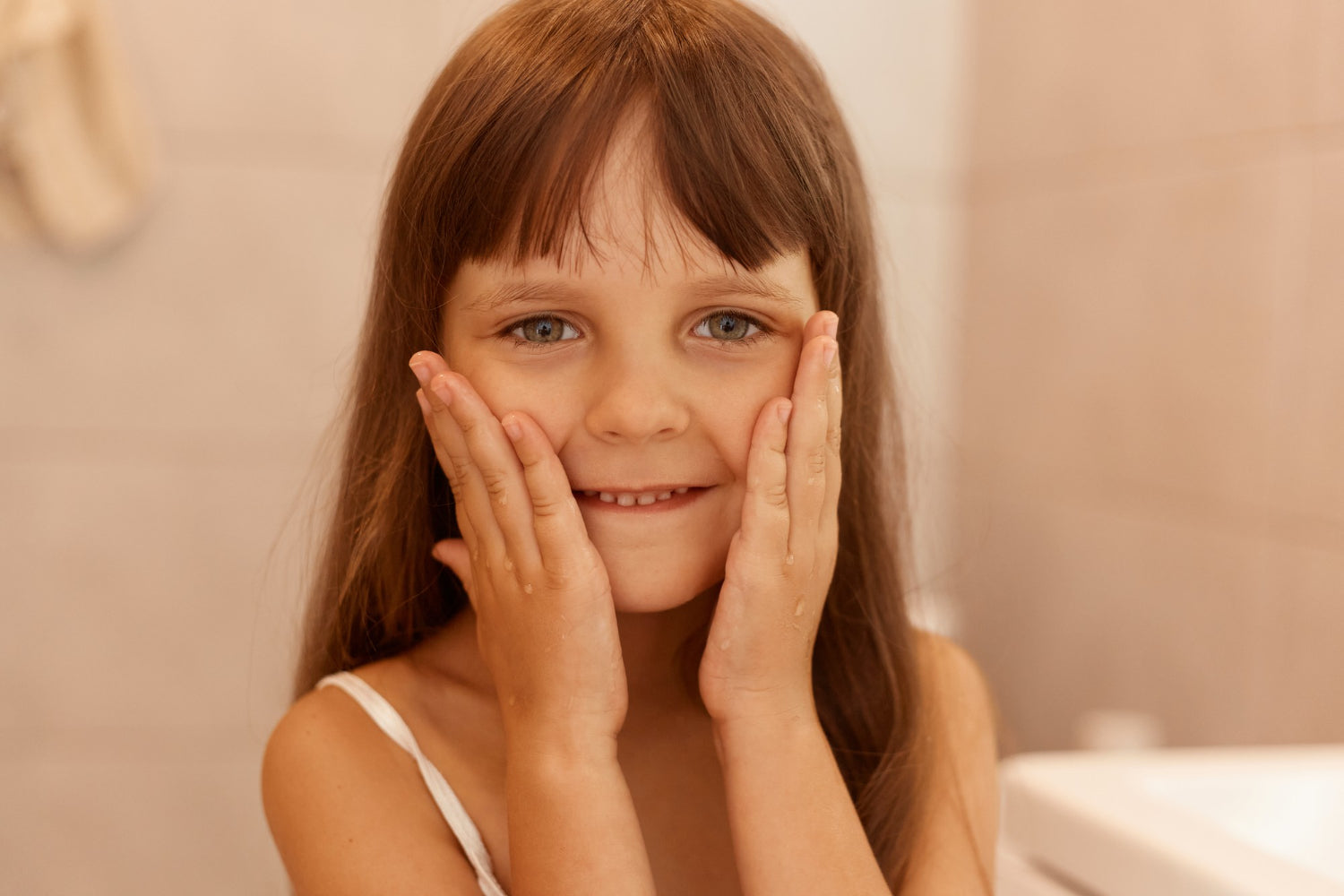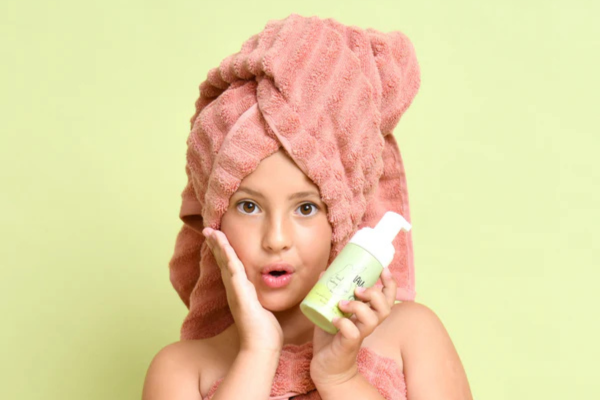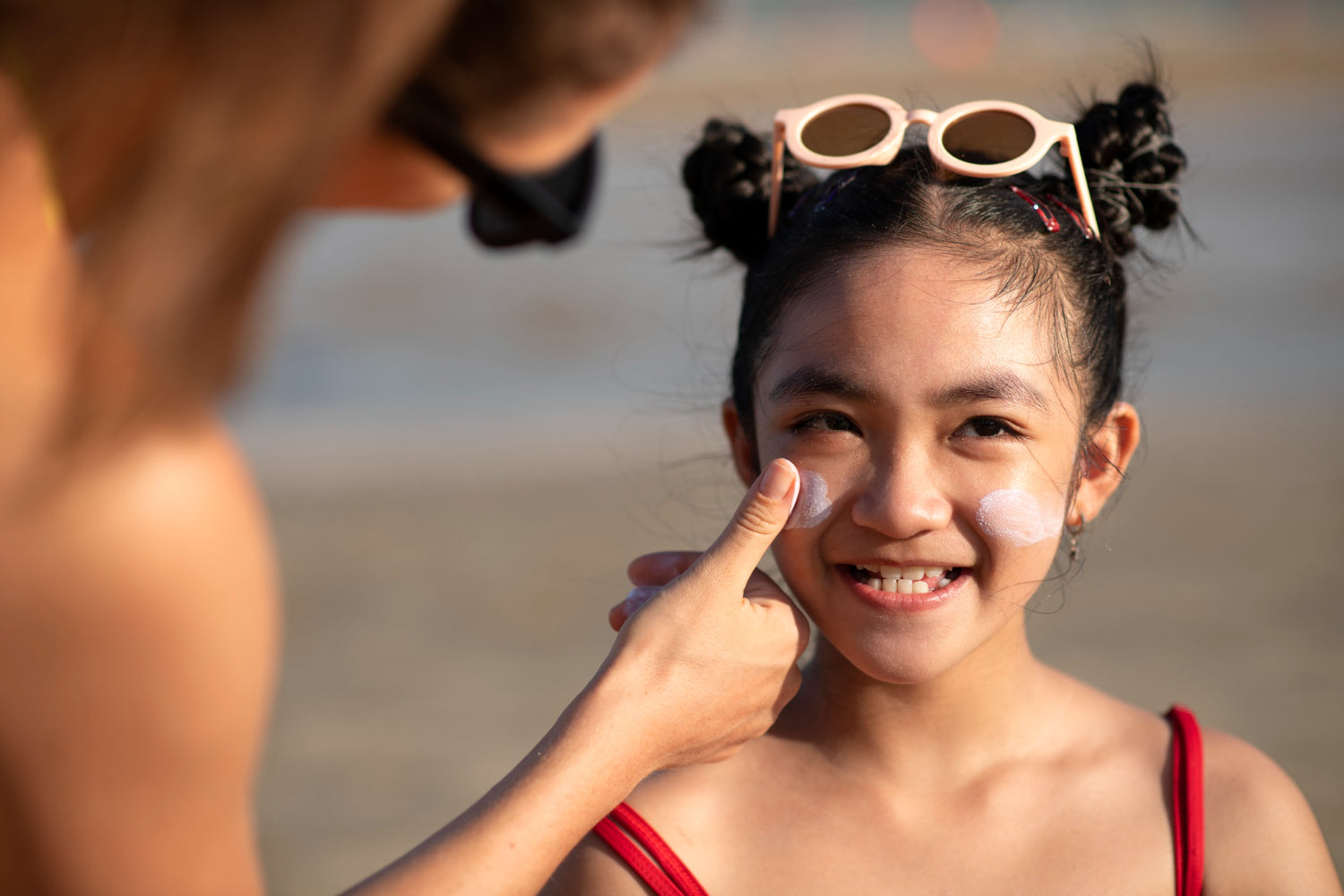
5 Signs of Dehydration in kids Skin
Your child's skin is more than just a soft outer layer—it's their first line of defence against the outside world. From protecting against bacteria to regulating temperature, healthy skin plays a critical role in your child's overall well-being. But just like adults, kids can suffer from skin dehydration, and it often shows up before other signs of internal dryness are obvious.
If your child's skin is rough, red, or just not its usual soft and supple self, it may be time to take a closer look at hydration. Unlike adults, children may not always be able to tell you when something feels "off." So, as parents, we need to recognise the subtle (and not-so-subtle) signs of dehydration in kids that their skin is calling out for help.
Let's explore what causes dehydration in babies' skin, the warning signs to look for, and the best ways to restore moisture, inside and out.
What Causes Dehydrated Skin in Kids?
Kids' skin is thinner and more delicate than adults', which makes it more vulnerable to moisture loss. Dehydration in children can stem from internal and external sources, and often, skin is one of the first places where this imbalance shows up. Let's discuss the most common causes of dehydrated skin in children.
Environmental factors: Cold weather, dry air, or heat
Your child's skin changes with the season. Cold, dry winter air can zap moisture quickly, especially if heating systems are on full blast indoors. Similarly, excessive sun exposure or hot, arid climates can strip away natural oils, leaving the skin rough and dry.
Lack of fluid intake or illness
If your child doesn't drink enough water or has recently been ill (with vomiting, diarrhoea, or fever), it's a sign of internal dehydration in the baby's skin. This affects the whole body, including the skin, which may start looking dull, patchy, or flaky.
Harsh soaps or over-bathing
Many commercial soaps, body washes, and bubble baths contain sulfates or artificial fragrances that can disrupt the skin's natural moisture barrier and cause dehydration in babies. Bathing too frequently, especially in hot water can also lead to moisture loss, leaving your child's skin tight and irritated.
Medical conditions
One of the signs of dehydration in kids is certain medical conditions like gastroenteritis, fever, and eczema. When the body's fluid levels drop or when the skin barrier is compromised, the skin loses its ability to retain moisture efficiently, leading to dry skin in infants.
Dehydration affects the whole body—skin is just the first clue
When your child is mildly dehydrated, it might not be immediately obvious. But their skin often provides the earliest visual cue. Paying attention to small changes in skin texture or tone can help you catch internal hydration issues before they get worse.
5 Warning Signs of Skin Dehydration in Kids
So, how do you know if your child's skin is in need of hydration? Common signs of baby skin dehydration are:
1. Dry, Flaky Patches
If you notice small white or rough patches on your child's cheeks, arms, or legs, it may be one of the signs of dehydration in babies. These flakes are typically caused by the skin's outer layer drying out, which leads to shedding and irritation. They often appear after a bath or overnight.
2. Lack of Skin Elasticity
The next in the list of signs of dehydration in kids is a lack of skin elasticity. Healthy skin should bounce back when pinched lightly. Dehydrated skin, on the other hand, can feel tight and may not snap back easily. You might also notice a creepy texture, especially around the knees, elbows, or back of hands. This loss of elasticity is a clear sign of dehydration in the baby's skin.
3. Dull, Pale, or Tired-Looking Skin
If your child's skin has lost its usual glow and appears dull or pale, it is one of the signs of baby skin dehydration. Skin that's lacking in hydration often looks "flat" and less vibrant. In some cases, under-eye shadows may also appear, making your little one look more tired than usual.
4. Redness or Mild Inflammation
Dehydrated skin is more prone to irritation and redness. You might notice red patches around the mouth, nose, or cheeks especially in dry weather or after a hot bath. Unlike a rash or allergy, this redness is often more diffuse and related to dryness in the skin barrier.
5. Tightness or Cracked Skin in Certain Areas
If your child frequently scratches or rubs their skin, it may be feeling tight or uncomfortable, and indicate dry skin in infants. Cracks or small fissures can appear around the knuckles, heels, or lips. This not only causes discomfort but can also increase the risk of infection if left untreated.
How to Soothe and Rehydrate Your Kid’s Skin?
When you notice the signs of dehydration in kids, find both internal and external solutions. Here's how to soothe and protect your child's delicate skin:
1. Keep Your Baby Hydrated (Fluids, Breastmilk, Formula)
One of the simplest ways to prevent dehydration in babies is to ensure your kid is drinking enough fluids. For infants, regular breastmilk or formula feeds are essential. For toddlers and older kids, offer water regularly, especially after physical activity or during hot weather.
2. Use a Gentle, Fragrance-Free Moisturiser
You don't have to use heavily scented lotion for your kids. Opt for a pediatric-safe moisturiser that's free of harsh chemicals and has been made organically. Apply it generously after a bath while the skin is still slightly damp. This helps lock in moisture more effectively and keeps the skin barrier strong.
3. Avoid Long or Hot Baths
To prevent dry skin in infants, limit their baths to 10-15 minutes. Over-bathing can strip away natural oils, leading to drier skin. Stick to gentle cleansers, and skip daily scrubbing unless absolutely necessary. This will help prevent dehydration in babies.
4. Use a Humidifier in Dry Environments
If you're running heaters or air conditioning indoors, consider adding a humidifier to the room. This helps maintain skin hydration, especially overnight, when the skin tends to dry out the most.
5. Dress Them in Soft, Breathable Fabrics
Tight or rough clothing can cause friction and worsen dry skin. Dress your child in soft cotton or bamboo fabrics that allow the skin to breathe while minimising irritation. This plays a major role in preventing the signs of dehydration in kids.
6. Hydration = Inside and Out
It's important to address skin hydration holistically, fluids on the inside and proper skin care on the outside. This dual approach ensures your child's skin stays healthy, soft, and protected all year round.
Super Hydrate Light Moisturiser by LAV Kids
Now, when it comes to reducing the signs of dehydration in kids, there is nothing better than the Super Hydrate Light Moisturiser by Lav Kids. This moisturiser is designed to provide deep hydration without clogging pores or irritating sensitive skin.

Lightweight and non-greasy
This moisturiser is lightweight and non-greasy, making it perfect for kid's daily use.
Suitable for sensitive skin
The formula is gentle and suitable for sensitive skin, reducing the risk of irritation or allergic reactions.
Deep hydration without clogging pores
This moisturiser provides deep hydration without clogging pores, allowing the skin to breathe and function naturally.
Natural and safe ingredients
It is made organically, with natural ingredients, making it a great choice for kids.
As far as its application is concerned, apply the Super Hydrate Light Moisturiser daily after bath or when dryness appears. Gently massage it into the skin until absorbed.
Conclusion
Dehydration in babies is common, but it's also easy to prevent with the right care. By paying close attention to early warning signs of dehydration in kids like dryness, redness, or lack of elasticity, you can intervene before it leads to discomfort or skin damage.
Don't let weather changes impact your baby; switch to deeply hydrating baby skincare today. Establish gentle skincare routines, and use safe products collection like LAV Kids Super Hydrate Light Moisturiser that support your child's skin without harsh chemicals.
Remember: A few minutes of care each day can go a long way in building lifelong skin health habits.
Explore the full range of gentle, kid-safe skincare on our website and make hydration fun, safe, and effective for your little ones.
Frequently Asked Questions
1. What does dehydrated skin look like on a kid?
Dehydrated skin in kids often appears dull, flaky, or patchy, with visible dryness and sometimes mild redness.
2. Is a kid's skin dehydration dangerous?
Yes, if left untreated, dehydration in babies can affect both the skin and overall health, leading to discomfort, irritation, or even more serious issues.
3. Can I use adult moisturisers on my kid's dehydrated skin?
It's best to avoid adult moisturisers, as they may contain harsh ingredients that are not suitable for sensitive children's skin.
4. How often should I moisturise my kid's skin if it's dehydrated?
Use a baby moisturiser for dehydrated skin at least twice a day, once after bathing and again before bed to restore and lock in hydration.
5. Does the weather affect kids skin hydration?
Absolutely. Cold, dry air or hot, sunny climates can strip moisture from kids' skin, making hydration even more essential.



